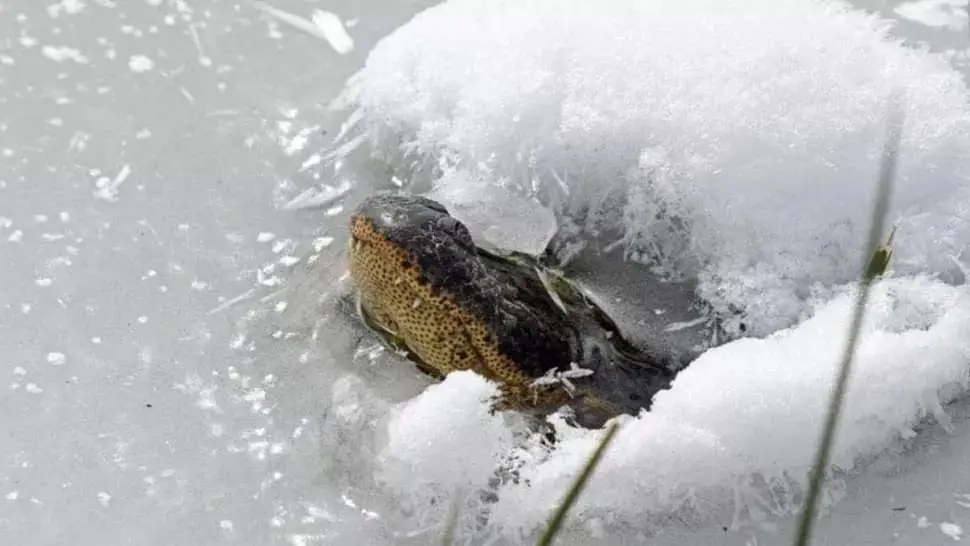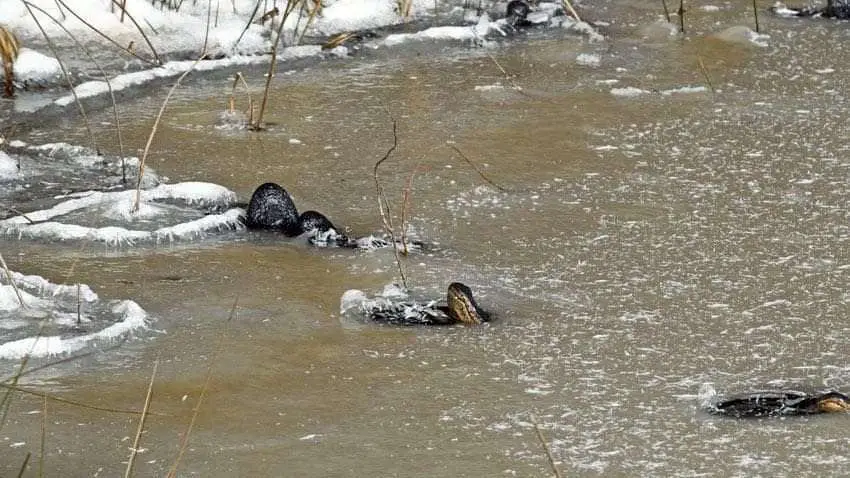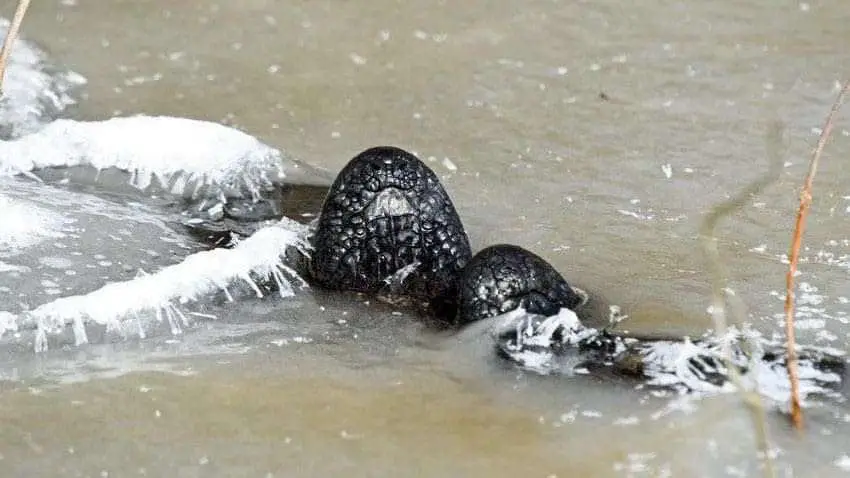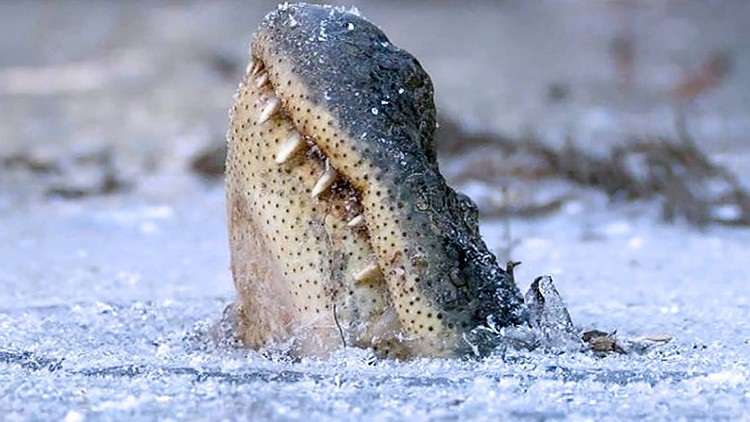What exactly are these alligators doing in this frozen lake?
Alligators freeze in swamp: When the cold snap hit the American South, Oklahomans were met with popsicle-like alligators — reptiles with snouts sticking straight out of the frozen water.
But why were these alligators “snorkeling” in such freezing temperatures? Why weren’t they lying in the sun on the banks or hiding in their burrows?

And who knew Oklahoma was home to alligators? The news of the snorkeling alligators sparked a debate on Facebook about whether alligators (Alligator mississippiensis) were native to the state or an introduced species.
According to an 1866 description of an alligator written in an Oklahoman man’s diary, they appear to be native, but other alligators have been introduced to wetlands in the state’s southeastern corner since then, according to Jena Donnell, the Wildlife Diversity Communication Specialist with the Oklahoma Department of Wildlife Conservation.
According to Donnell, the alligator’s unusual snorkeling behavior is completely normal. “This is a natural response [seen in alligators] whenever it ices over,” she explained. “Because the water they were in froze over, they needed to make a snorkel,’ so they tipped their nose out of the water to keep some ice-free water, so they could still breathe.”

Alligators are cold-blooded, or ectothermic, animals, which means their body temperature varies with the temperature outside. Alligators are frequently seen basking in the sun or camping out in burrows with air pockets dug into the banks of lakes and waterways.
When freezing temperatures strike their habitats, gators do not bask on the bank because cold air is colder than cold water. Instead of staying in their burrows, where they could become trapped if the water freezes over, alligators frequently swim to the surface to go snorkeling, ensuring that they have enough oxygen.
If the water is cold but not yet frozen, alligators will frequently swim to deeper waters that are warmer than the shallows, according to Donnell.
Unfortunately, not all of the alligators at the Red Slough Wildlife Management Area, a 5,800-acre (2,300-hectare) refuge in southeastern Oklahoma managed by the Oklahoma Department of Wildlife Conservation, the United States Forest Service, and the Natural Resources Conservation Service, survived the cold snap.

Donnell was unsure how many alligators had died as a result of the cold snap, but he did know that the majority of those who died were juveniles. “The majority of the adults were able to make it through the cold weather event,” she explained. “It’s always fascinating to see how animals adapt to their environment and how they can develop different survival strategies.”
According to a 2017 study published in the journal Herpetological Review, freezing temperatures and icy conditions are not uncommon in southeastern Oklahoma; on average, McCurtain County, where Red Slough is located, has about 60 days a year with temperatures below 32 degrees Fahrenheit (0 degrees Celsius), which is below freezing on a daily basis.
Snorkeling alligators are not only found in Oklahoma; they have also been observed in North Carolina in 2018 and 2019, according to a previous report from Live Science.
Oklahoma alligators frozen in water with snouts sticking out | Video
All the information and photo credit goes to respective authorities. DM for removal please.
Related: Amazing! American crocodile love to live in Florida Country Club; can’t be removed

